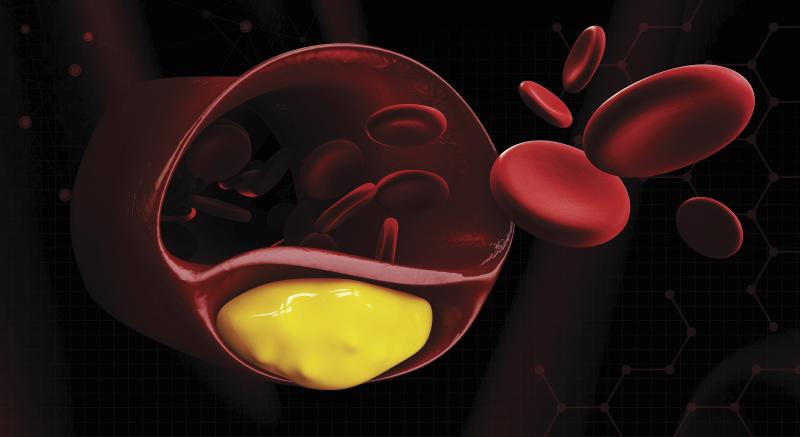
Evolocumab treatment over 2.3 years does not seem to benefit atherosclerotic patients without multiple clinical risk factors or high genetic risk, and these individuals also have a low event rate. However, those with high genetic risk, irrespective of clinical risk, have a high event rate and receive large relative and absolute benefit from this therapy, thus alleviating such risk, according to a study presented at the 2019 Scientific Sessions of the American Heart Association.
“In established cardiovascular disease, a genetic risk score identified subsets of patients who had significantly increased risk of recurrent events beyond clinical risk factors and identified a gradient of benefit from evolocumab,” the researchers wrote.
Adjustment for clinical factors showed an association between genetic risk score and both major vascular events (MVE; p-trend=0.005) and major coronary events (MCE; p-trend<0.001). MCE risk was increased by 1.23 and 1.65 times in individuals with intermediate and high genetic risk scores, respectively. [Circulation 2019;doi:10.1161/CIRCULATIONAHA.119.043805]
Elevated genetic risk correlated with major atherosclerotic risk and characterized patients who could benefit more from evolocumab therapy.
Patients without multiple clinical risk factors or high genetic risk did not derive benefit for MVE (hazard ratio [HR], 1.02; absolute risk reduction [ARR], –0.2 percent; p=0.86). On the other hand, patients with multiple clinical risk factors but without high genetic risk had a 13-percent relative risk reduction (HR, 0.87, 95 percent confidence interval [CI], 0.75–0.998; ARR, 1.4 percent; p=0.047), while those with high genetic risk, regardless of clinical risk, had a 31-percent relative risk reduction (HR, 0.69, 95 percent CI, 0.55–0.86; ARR, 4.0 percent; p=0.0012; HR: p-trend=0.017; ARR: p-trend=0.004).
Moreover, patients with high genetic risk who were treated with evolocumab had event rates similar to those with a low burden of both genetic and clinical risk.
“For years, clinical risk factors and scoring systems have been used to estimate a patient’s risk of cardiovascular events,” the researchers said. “There is now the ability to consider a patient’s genetic risk.” [Circulation 2008;117:743-753; Circulation 2014;129:S49-73]
Furthermore, genetic risk identified those with both low and high burden of clinical risk factor to the extent that the presence of both was worse than either one alone, while neither correlated with the lowest risk of all, according to the researchers.
“Other studies have supported the additive value of clinical and genetic risk stratification for cardiovascular disease,” they added. [Genetics and Molecular Biology 2018;41:766-774]
The current study included 14,298 patients with atherosclerotic cardiovascular disease (ASCVD) from the FOURIER trial. Genetic risk was defined using a 27-SNP genetic risk score: low (quintile 1), intermediate (quintiles 2–4) and high (quintile 5). Patients were also categorized by major atherosclerotic risk factors, such as diabetes, hypertension, smoking and low-density lipoprotein cholesterol ≥100 mg/dl. Those with multiple risk factors were considered at high clinical risk.
The following outcomes were then assessed over a median follow-up of 2.3 years: MCE (coronary heart disease death, myocardial infarction or coronary revascularization) and MVE (MCE plus ischaemic stroke).